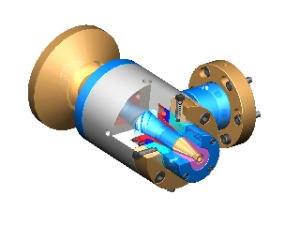Check Your Operator’s Manual
Follow the guidelines outlined in your operator’s manual. Individual tools may have specific recommendations, so contact your supplier if anything is unclear. They understand that optimum performance relies upon proper care and maintenance, and they’ll be happy to help. Here are some useful tips:
• Clean your equipment while it is still hot, since residue will be easier to remove. It helps to remove and clean one piece of tooling at a time in order to maintain elevated temperatures.
• When cleaning dual-compound crossheads, such as plastic and rubber, always clean the plastic tooling first and the rubber tooling second.
• Never use steel tools such as scrapers or screwdrivers. These can scratch and mar the tooling
• Do not use open flames. This generates excessive heat, especially in thin sections, which can affect hardness, concentricity, and tolerances of components.
• Select tools and materials for cleaning:
• Brass pliers to grip material and aid in pulling.
• Brass scrapers, available in different widths for cleaning flat exposed surfaces.
• Brass bristle tube brushes, available in diameters from 1/16 inch to 1-inch, in 1/16-inch increments (ideal for cleaning holes and recesses).
• Brass rods – different diameter rods are good for pushing material out of flow holes
• Copper gauze for cleaning and polishing exposed round or conical surfaces.
• Copper knives for removing residue form recesses and other hand-to-reach areas.
• Polishing compound to restore polished surfaces
• Compressed air, which is more effective for releasing plastic but also aids in rubber removal (be careful not to force debris into recesses with compressed air).
• Cleaning solutions may be useful – remember to use fresh, clean rags (used rags often have metal chips embedded in them, which may scratch polished surfaces).
• Cleaning oven – use for plastic only, not rubber. Follow the manufacturer’s recommendation. If no temperatures are specified, do not exceed 850oF and do not quench the tooling to cool, because this could affect the hardness, concentricity, and tolerances of the tool parts.
• Cleaning materials – several compounds are available to purge the extruder screw and barrel of residual polymer (this helps considerably in the final cleanup).
Die components, especially those with sealing and locating surfaces, are a key to die performance and successful end products. These surfaces received the most care and attention during manufacturing and are the control surfaces that ensure uniformity through-out. Precision-machined alignments are affected by even a speck of dirt measuring only a couple thousandths of an inch. A human hair is about three thousandths of an inch in diameter, and since there are many such surfaces in a high-quality tool, cleanliness is critical.
It is important to check tools for deformities. Burrs, scratches, and scrapes are usually a result of careless handling and/or storage of equipment.
As compared to single-layer heads, double- and triple-layer extrusion heads pose an even greater challenge for maintenance. The number of sealing and centering surfaces multiplies and can magnify the result of dirty tools.
During changeovers, the head may be disassembled in order to change compounds and/or tips and dies. Foreign matter is usually introduced at this time, and residual materials must be thoroughly removed.
Physical tool damage often occurs during this phase due to mishandling and poor storage techniques. These are highly precise parts, but can also be heavy and bulky to remove by hand.
Make Repairs As Needed
Examine all surfaces for any irregularities such as burrs and scratches, since these must be repaired before the head is reassembled. Most manufacturers recommend using a hand polishing stone to remove the offending burr. Follow stoning with a light application of 600-grit emery cloth if necessary, but avoid rounding edges that are intended to be sharp.
Flat sealing surfaces can be cleaned using a stone, following by a 600-grit emery cloth. Place the cloth on a clean, flat surface, preferably a surface plate, then apply friction in a circular hand motion until the area is clean and even. The parts in question should all be hardened steel alloys and will not be adversely affected using these methods. Monel and Hastalloy are typically not heat-treated, requiring special care and handling to avoid any damage.
Putting It All Back Together
Working from your dedicated tool cart, follow the die manufacturer’s instructions for reassembly. Give each component a final wipe down with a clean rag before installing. Even the smallest amount of grit, dirt, and residual material must be removed.
Use either mechanical or manual assistance for heavy and awkward components, in the hope of avoiding unnecessary mishaps. Reapply antiseize compound to all fasteners if required.
Tighten fasteners to manufacturer’s recommended specification, as well as in the recommended sequence. This fastening sequence should be specified in the manual and is generally in a star pattern, tightening gradually until the proper torque is achieved. This prevents distortion of the tooling.
One of a die manufacturer’s main goals is to form a concentric cone of compound as a quickly and accurately as possible in the primary section of the die, when the extrudate first emerges from the die’s distribution capillaries.
A properly designed and manufactured die has even distribution close to the extrudate entrance point, but this effort is negated once the die is adjusted, shifting the extrudate off to one side. An eccentric cone is formed in the primary area, and a concentric cone exits at only point in the process, rather than a smooth, continuous flow path with decreasing volume. A properly manufactured and aligned extrusion head, along with well-maintained tooling, should require little or no adjustment.
Visit us at www.guill.com, to learn more.

